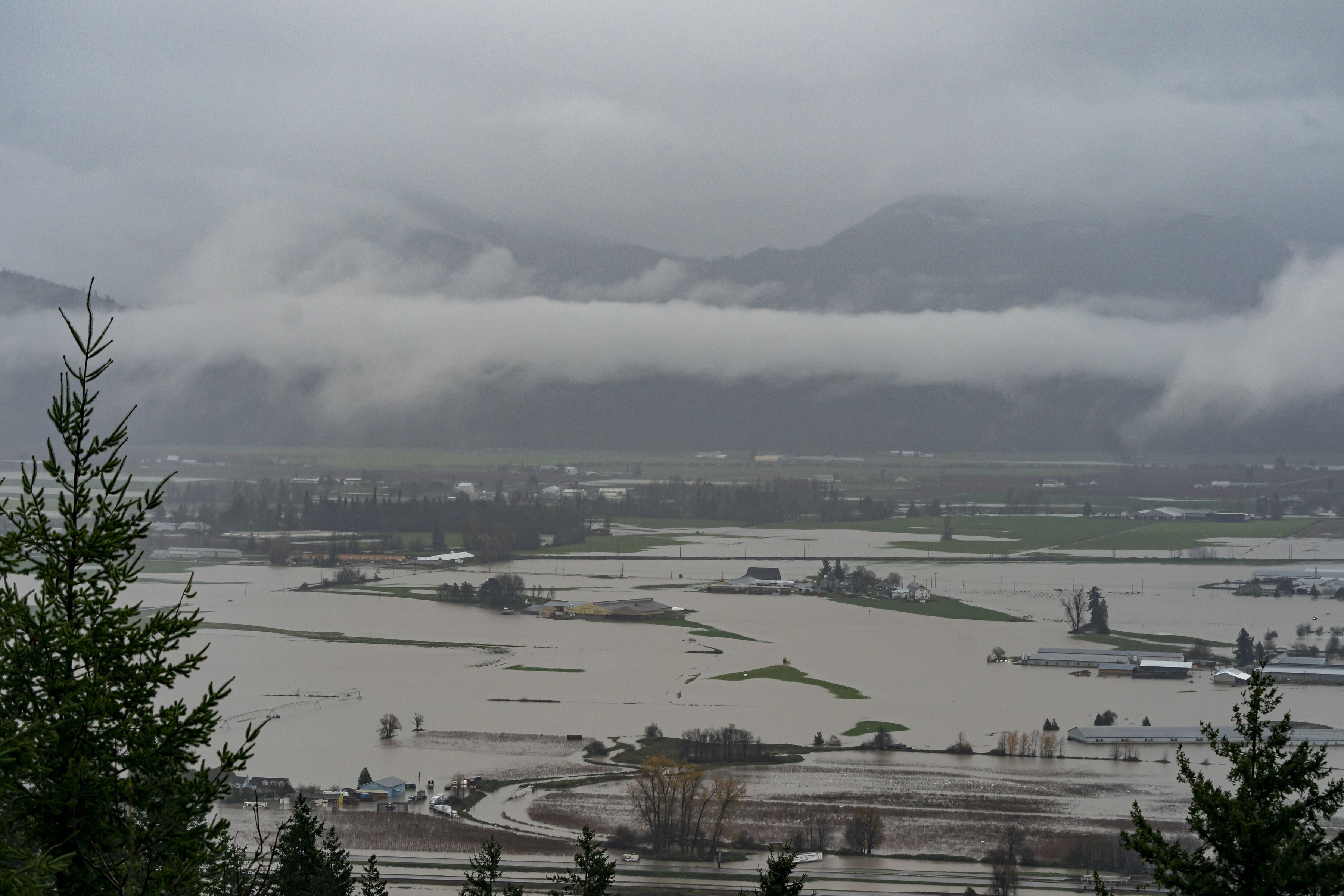Panicked shoppers clear out grocery stores in flood-hit British Columbia
Sign up now: Get ST's newsletters delivered to your inbox
Follow topic:
BRITISH COLUMBIA (REUTERS) - Shoppers in Canada's flood-hit province of British Columbia (BC) have emptied grocery shelves following catastrophic flooding, although the shortages are as much down to panic buying as disrupted supply chains, industry associations said on Thursday (Nov 18).
Even as flood waters start to recede, some parts of the province are expected to face to temporary shortages of dairy supplies, with retailers and officials calling for calm.
Canada's westernmost province declared a state of emergency on Wednesday after a phenomenon known as an "atmospheric river" brought a month's worth of rain in two days.
The rainfall washed out roads and railways, cutting off Vancouver and the lower mainland region from the rest of the country, and blocking access to some towns entirely.
Pictures on social media showed empty shelves and refrigerators in grocery stores, reminiscent of the early days of the Covid-19 pandemic, as shoppers scrambled to stock up.
Photos of one store's produce section showed nothing left but lemons, limes and cranberries.
Save-On-Foods, western Canada's largest grocery retailer, and part of the Jim Pattison Group, appealed to customers to avoid hoarding.
"We understand that this is a very stressful and challenging time for many of our communities," the company said on Twitter.
"Please - buy only what your family needs at this time."
Meanwhile, emergency crews were still trying to reach 18,000 people stranded on Thursday after floods and mudslides destroyed roads, houses and bridges in British Columbia in what could be the costliest natural disaster in Canadian history.
Receding floodwaters helped rescue efforts, but the downpour blocked off entire towns in the Pacific Coast province and cut access to the country's largest port in Vancouver, disrupting already strained global supply chains.
Premier John Horgan declared a state of emergency and said the death toll would rise from the one confirmed fatality.

<p>ABBOTSFORD, BC - NOVEMBER 18: Flood water surrounds an amusement park on November 18, 2021 in Abbotsford, Canada. Record rainfall this week has resulted in widespread flooding. Rich Lam/Getty Images/AFP == FOR NEWSPAPERS, INTERNET, TELCOS & TELEVISION USE ONLY == </p>
PHOTO: GETTY IMAGES NORTH AMERICA
Police say four more people are missing.
Many of the affected towns are in mountainous areas to the east and northeast of Vancouver with limited access.
Provincial Cabinet ministers told a briefing on Thursday that some major highways were slowly starting to reopen.
Some towns reported fuel shortages. Deputy Premier Mike Farnworth said the province was exploring whether to import fuel from the United States or neighboring Alberta.

Rain continues to fall as flood waters fill the Sumas area in Canada's British Columbia province on Nov 18, 2021.
PHOTO: GETTY IMAGES NORTH AMERICA
In Ottawa, the federal minister for emergency preparedness, Bill Blair, said river flows were beginning to drop as the rain lightened.
"The situation remains critical, however, but there is in fact an improvement," he told reporters.
Ottawa has promised to send hundreds of air force personnel to British Columbia, the first of whom have already arrived. Thousands more are on standby.
The flooding also hit the US state of Washington, as President Joe Biden noted before a meeting with Canadian Prime Minister Justin Trudeau.
"We've been good friends for a while ... We're both keeping our minds close to the families affected by the storms, flooding in the British Columbia area and the Pacific Northwest," he said in the Oval Office.

